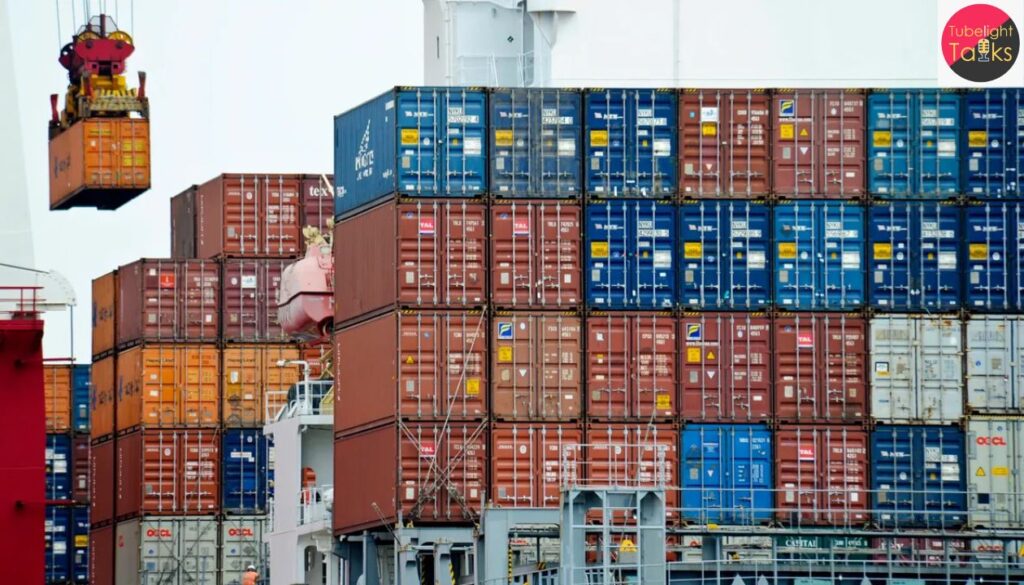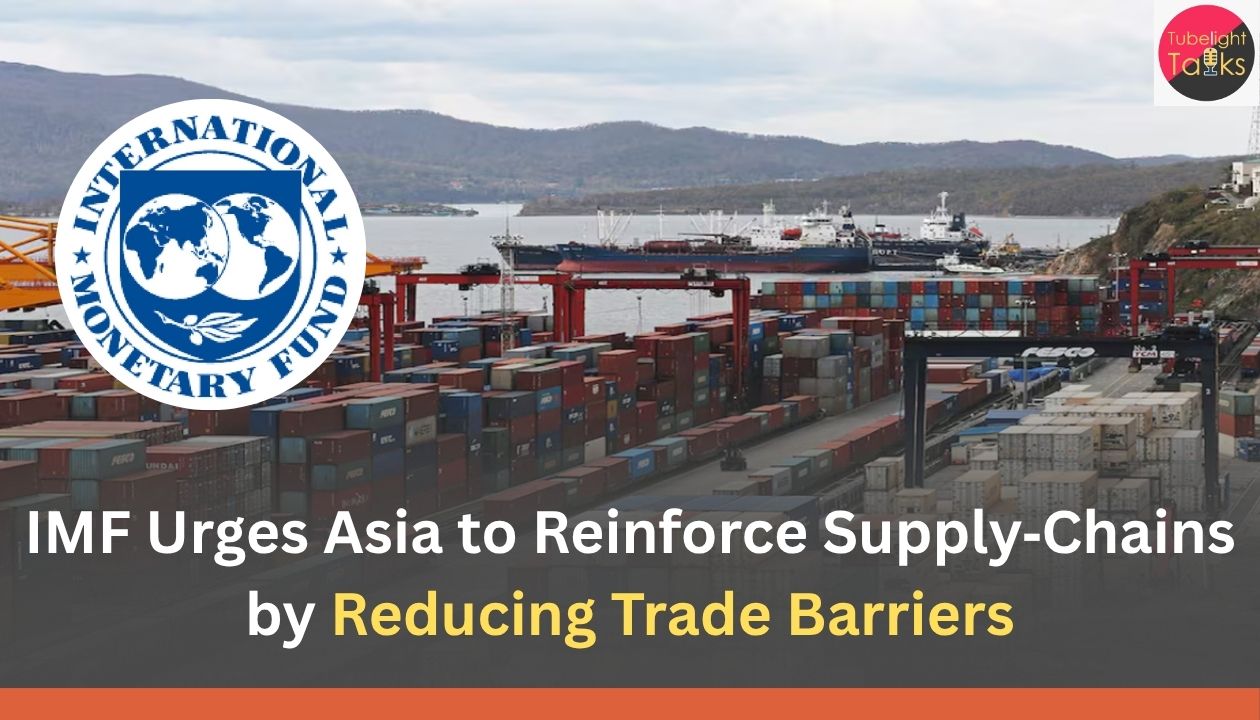IMF Urges Asia: The International Monetary Fund has called on Asian economies to adopt more open regional trade frameworks, reduce non‑tariff trade barriers and better integrate intra‑regional value chains to protect themselves from mounting external shocks—particularly U.S. tariff escalation.
While Asia is projected to grow at about 4.5% in 2025, the IMF warns of a slowdown to around 4.1% in 2026 unless policy reforms are implemented. The report highlights that Asia is heavily embedded in global supply chains—with major exposure to the U.S. and European demand—making it especially vulnerable in a world of growing trade tension.
Structural Weaknesses in Asian Trade
Deep Intermediate‑Goods Trade, Shallow Final‑Goods Integration
According to the IMF, about 60% of Asia’s total exports in intermediate goods remain within Asia—but only 30% of final‑goods exports stay within the region.
This gap illustrates that Asian economies rely heavily on external consumer markets, making them susceptible to demand shocks from outside the region.
Non‑Tariff Barriers Rising
During the COVID‑19 pandemic and afterward, many countries ramped up non‑tariff measures—licensing, standards compliance, local‑content rules, border controls—which act as hidden walls. The IMF emphasises that reducing these will deliver large gains.
External Tariff Pressure and Supply‑Chain Risk
As U.S. tariffs mount and global supply networks shift, the FMI warns that Asian economies face heightened risk from external policy shifts, supply‑chain fragmentation and delayed investment decisions.

IMF’s Recommendations
Lower Trade Friction, Harmonise Standards
The IMF urged Asian governments to streamline trade rules, align standards and reduce duplicative bilateral deals in favour of broader, more predictable frameworks.
Deepen Intra‑Regional Trade
By boosting trade among Asian nations, countries can reduce dependence on external markets and build resilience into production networks. The IMF estimates regional GDP gains of up to 1.4% region‑wide and up to 4% for ASEAN economies through deeper integration.
Strengthen Domestic Demand and Productivity
While trade remains key, the IMF points out that domestic demand, structural reforms and productivity improvements are essential to complement trade‑centric strategies.
Implications for Asian Economies
Prominent Economies Under Pressure
Countries like China, South Korea and Japan are both major supply‑chain hubs and exposed to U.S./global demand. As supply‑chains shift and tariffs linger, they face strategic choice: deepen regional orientation or stay globally oriented.
Emerging Economies’ Opportunity
Smaller and emerging economies in South and Southeast Asia stand to benefit if they remove trade barriers and position themselves as alternative hubs in “Asia‑plus‑one” strategies. But this requires infrastructure, regulatory reform and trade facilitation.
Risk of Inaction
If reforms lag, Asia risks slower growth, higher costs, trade disruption and weaker resilience. The IMF flags that ongoing uncertainty around trade policy could weigh on investment and sentiment more than expected.
Also Read: IMF urges Asia to cut trade barriers to reinforce supply‑chain resilience
A Perspective of True Progress
In the spirit of satgyan, the true knowledge taught by Sant Rampal Ji Maharaj, this moment in Asia’s trade history invites a deeper reflection: global supply‑chains and trade networks may measure progress in numbers, but real advancement is about people, cooperation and shared resilience.
When goods flow freely but communities remain vulnerable, and when economic strategy solely serves profit rather than welfare, the question is: are we truly progressing? By reducing barriers, integrating regionally and sharing prosperity, Asia has an opportunity not just to weather external shocks—but to build a model of trade that is inclusive, stable and morally grounded.
What to Watch Next
Policy Announcements on Non‑Tariff Barriers
Which Asian governments will announce concrete regulatory reforms—such as simplified standards, digital trade facilitation or border‑customs modernisation?
Trade‑Data Shifts and Corporate Strategy
Will intra‑Asian trade volumes increase? Will firms accelerate relocation, diversify suppliers or reduce dependence on Western consumer markets?
Growth and Investment Signals
Will projected growth of 4.5% in 2025 hold? Will companies invest more in Asia versus elsewhere? And will trade‑policy uncertainty decline or linger?
FAQs: Asia Trade Strategy & IMF Advice
Q1. What are non‑tariff trade barriers (NTBs)?
NTBs include licensing, local‑content rules, standards, customs delays and border controls which make trade costlier or slower even when tariffs are low.
Q2. Why is Asia vulnerable to trade shocks?
Because while it handles about 60% of its intermediate‑goods trade internally, only around 30% of its final‑goods trade stays within the region—making many economies dependent on external markets.
Q3. What benefits could deeper regional integration bring?
The IMF estimates that Asia could gain up to 1.4% in GDP through deeper regional trade; ASEAN economies could potentially see gains up to 4%.
Q4. What did the IMF estimate for Asia’s growth?
Growth is forecast at 4.5% in 2025, but has risk of slowing to 4.1% in 2026 if trade and demand risks persist.
Q5. What steps should governments and firms take?
Governments should streamline trade rules, reduce NTBs and integrate regionally. Firms should diversify supply‑chains, build regional sourcing and monitor policy shifts actively.










